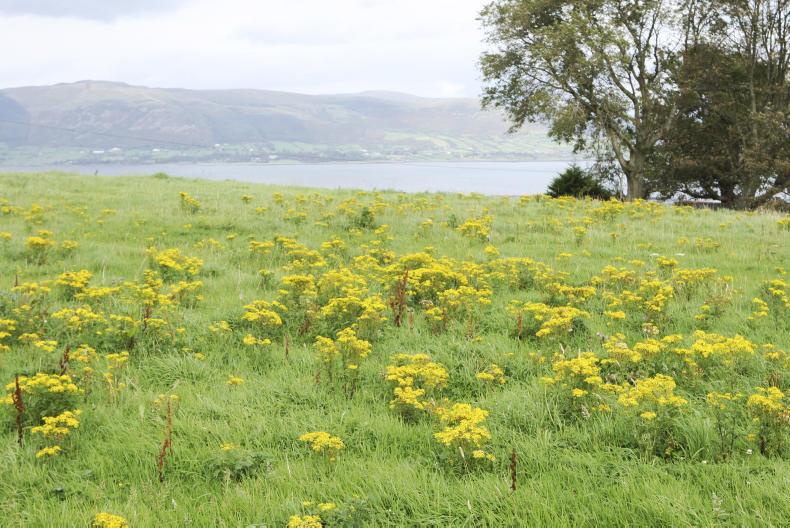Ragwort (buachalán) is potentially deadly to livestock as it can lead to poisoning. Unfortunately it is more palatable to animals when dead, which makes it difficult to control safely.
Each plant can produce 50,000 to 200,000 seeds over a six week period between July and September and it is critical to control them now to prevent the spread.
Where present in fields, responsibility for controlling ragwort lies with the landowner or the manager of the lands in which the plant is present. Local authorities are charged with the responsibility for controlling the weed on roadsides.
Control of the plants is best carried out through pulling, ploughing, cutting or chemical control.
Cattle generally do not graze the plant in its vegetative state, (unless very tight on grass) but once cut, the plant releases sugars which make it much more attractive. It also presents a large risk where it is contained in hay or silage. Therefore, control options must take this into account.
Sheep are less affected by consuming ragwort. Where there is a larger number of ragwort plants, many herbicides containing either MCPA, 2.4-D or dicamba can provide good control. Products such as Forefront T will also provide good control.
Spraying in the rosette stage is the most effective, with late autumn (mid-September to mid-November) or early spring (mid-February to mid-March) the best periods to spray.
In pastures where spraying occured, measures must be taken to prevent stock from eating any dying or dead ragwort plants, so delay grazing or cutting fodder until all plants are dead and sufficiently rotted down. Ploughing, followed by a three to four year arable rotation or a programme of spraying if direct seeding works well.
Ploughing followed by direct seeding will not be a success unless chemical control of newly germinated ragwort is carried out in the new ley. Pulling ragwort by hand is recommended where the infestation is not severe and labour is available. Pulling ragwort after heavy rainfall when the ground is soft is easier but should be done before seed has set.
Pulled plants should be removed and destroyed. Repeat for two consecutive years to achieve eradication.






 This is a subscriber-only article
This is a subscriber-only article









SHARING OPTIONS: